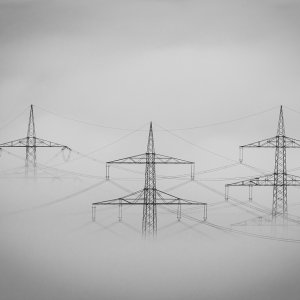Minimizing Risks in the Energy Sector

STORY INLINE POST
Q: How does the Mexican energy market compare to other countries where Antuko has operations?
A: The company is originally from Chile, where we started operations 10 years ago. After that, we decided to expand our business and establish offices in Spain and Mexico simultaneously. Mexico’s operations took off much faster because the Spanish market is in a more mature stage. In Mexico, the price-setting process does not include a subjective component, whereas in Spain this is part of the pricing. Generators do not have to report a cost, rather they set a price. The subjective part of the price-setting mechanism really complicates modeling because you cannot predict what people think. This is why the model that we use in Spain took close to 30 months to develop, while the Mexican model took 20 months.
Chile and Mexico also have several differences. Chilean market has one preponderant player and its transmission and distribution segments are open to the rest of the players in the market. The consumption and generation centers are also very spread out, with solar generation being predominant in the north, wind generation being more relevant in the south and consumption located in the center. It could be said that the country has one big transmission line that covers its territory and it is easy to evaluate where grid congestion is presented. When we arrived in Mexico, this was an advantage because the company already knew how big utility-scale energy infrastructure projects perform in places with a bad transmission system.
Q: How is Mexico’s energy market expected to evolve?
A: It is really interesting to see how markets evolve during different stages. Right now, developers have many projects in their pipeline that they are trying to finance and position as PPAs. In Mexico, it is very important to understand what the new energy priorities entail for the system and what can be expected if more hydropower and coal are added to the system.
During 2019, we observed the impact of the second and third long-term electricity auctions in Mexico but we are also experiencing the effect of a lack of investment in the transmission segment. It is very important that the government provides clear signals for private investors as the country’s electricity demand is rapidly growing and it would be hard for the federal governments to meet demand using only public funds.
On the private investment side, banks must realize that the auction scheme has changed, which means they should be more creative or lower their expectations in terms of ROI. For instance, 2019 electricity prices reached record heights in 1Q19. Consequently, price spikes and congestion that we have historically observed in April and May took place in February and March. The second was the transmission grid’s deficient capacity. Even if projects from the auctions and private PPAs are consolidated in the future, we are going to miss the opportunity to lower costs if we do not have the transmission grid to support the new installed capacity.
Q: What services does the company expect will be the most in-demand in the near term?
A: We expect our consultancy services will see strong demand. The companies that are going through project finance or alternative finance mechanisms need to understand what their income is going to look like in the next 20 years and we can support them. We can evaluate congestion, not only at this moment, but in the future as well, which provides an added value. We are receiving a lot of requests for proposals in every sector, from developers to commercial and multilateral development banks.
Also, we have expanded our modeling capacities. Our products have transitioned from a tailor-made offer, to a more off the shelf, but still personalized, product. In the past, we created individual reports for every client and now we make one report and then customize it for the specific needs of each customer. This has helped us lower our prices. Also, we follow a strict schedule regarding our reports as we publish them every three months; this allows us to offer a subscription service that provides clients with access to update information. Given that we have a strong academic mindset, sometimes our customers seek more executive-level reports. In response, Antuko has developed brief reports that help decision-makers, who are not necessarily experts on the price-setting mechanism, understand what is going on and what are the main drivers of change.
Qualified suppliers, meanwhile, are responsible for all the requirements related to their clients’ loads and they must meet their customers’ every need, such as CELs, capacity and energy. Many qualified suppliers are under a model where they act as a broker and transfer risks to the end user. Most of these consumers, however, are not willing to close deals. With our services, qualified suppliers can provide a flat rate and they can understand and manage this risk. We take our methodology from our financial portfolio management side and apply it to the energy sector.
Antuko is a consulting company specialized in quantitative consulting and energy price projections, market intelligence and energy trading including spot prices, stabilized prices, nodal differences. It has offices in Chile, Mexico and Spain.























